From Bademiya to Indigo and Social -- most recently, the area in the shadow of the Taj Mahal Hotel has been a hotbed for some of Mumbai's most popular and long-standing eateries
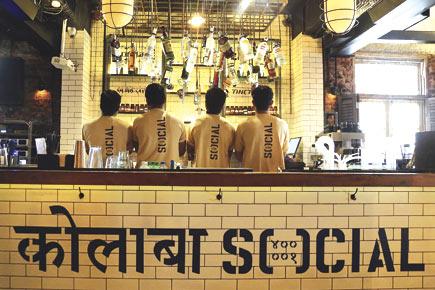
Colaba, Bagdadi, Bademiya, Indigo, Iconic Taj Mahal Hotel, Landmark eateries, Food Special, Mumbai Guide
There’s a crowd outside Social, a novel-work-by-day-play-by-night concept restaurant, which opened in August, almost every evening.

An interior shot of the bar at Colaba’s favourite new hangout, Social.
ADVERTISEMENT
Everyone’s there to check out South Mumbai’s newest eatery; two lanes down on tiny Tulloch Road there’s also a crowd, but they’re regulars returning to their favourite haunts some of which are more than a 100 years old. It’s appropriate that the pin code for this area is 400 001, for in the by lanes, in the shadow of the Taj Mahal Hotel are not just restaurants that are nationally famous and internationally recognised, but also the oldest in the city.
The big daddies
"Leopold’s, Olympia and Bagdadi are the oldest restaurants in this area,” says Shafiq Ahmed, one of the owners of Bagdadi, who maintains the restaurant is 125 years old.
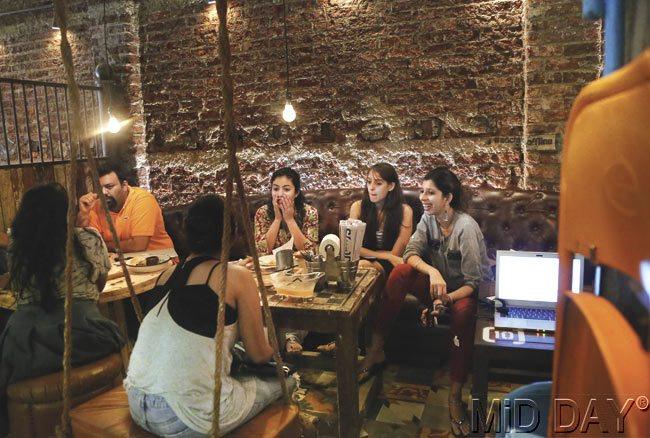
Social has become a favourite hangout since its August opening
There are no official records to back his claim, but he knows that his grandfather Bade Miya Sukkha started it, and he took over from his father in the early 1960’s. The menu has not changed since the time they opened, people still flock to Bagdadi for the bright-red, fried chicken joints in gravy and the large, slightly sweet rotis, says Ahmed.
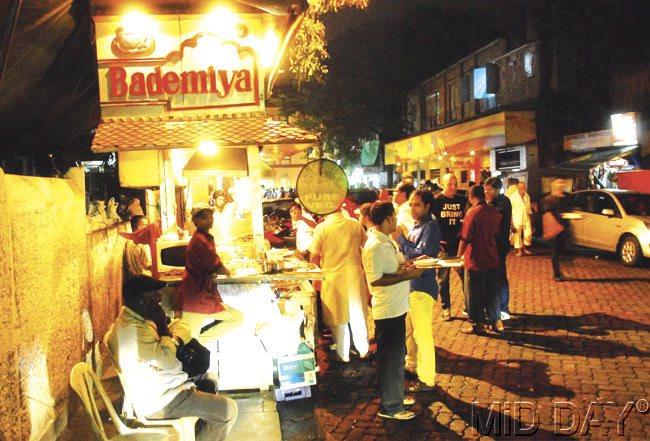
Bademiya continues to feed Mumbai’s nightcrawlers into the wee hours of the morning. Pic/Sayyed Sameer Abedi
A stone’s throw away from Bagdadi is one of the most famous restaurants in the country: Bademiya. Opened in 1942, the kebab stall moved locations in the tense pre-Independence years before finally settling down at a spot diagonally opposite the current location. It was no coincidence that Mohammed Yasin, who came to be known as Bademiya for his long flowing beard chose this spot. Yasin’s father ran a mutton shop in the early 1900s in what used to be an open area behind Bagdadi. Bademiya has now expanded with one outlet in Horniman Circle, and the second in the next lane replacing Laxmi Vilas, a very old and popular South Indian restaurant.
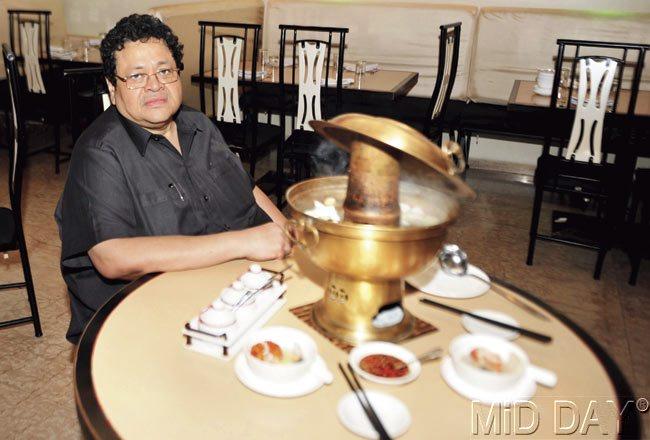
Baba Ling at Ling’s Pavilion
Chinese legend
The 1940s saw the launch of another legendary restaurant: Nanking. Opened in 1945 by Yick Sen Ling it was one of the first Chinese restaurants in Mumbai. “The who’s who of India ate at Nanking’s”, says Ling’s son Baba Ling. At that time the only Chinese restaurants in Mumbai were Kamling and Kokwah, which became Mandarin and then finally Henry Tham’s before shutting down and being re-opened as Pizza Express.
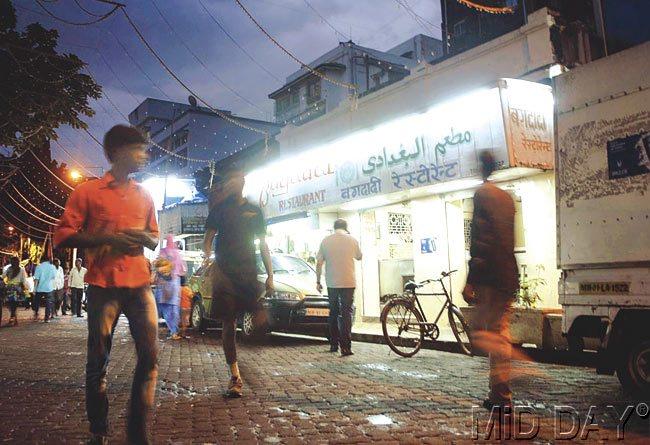
Bagdadi’s owners claim that the eatery might be 125 years old
Nanking was torn down in 1994, but Baba Ling had already opened Ling’s Pavilion in the previous lane in the spot that was earlier occupied by Frederick’s, a popular Chinese restaurant of the 1960s and 70s.
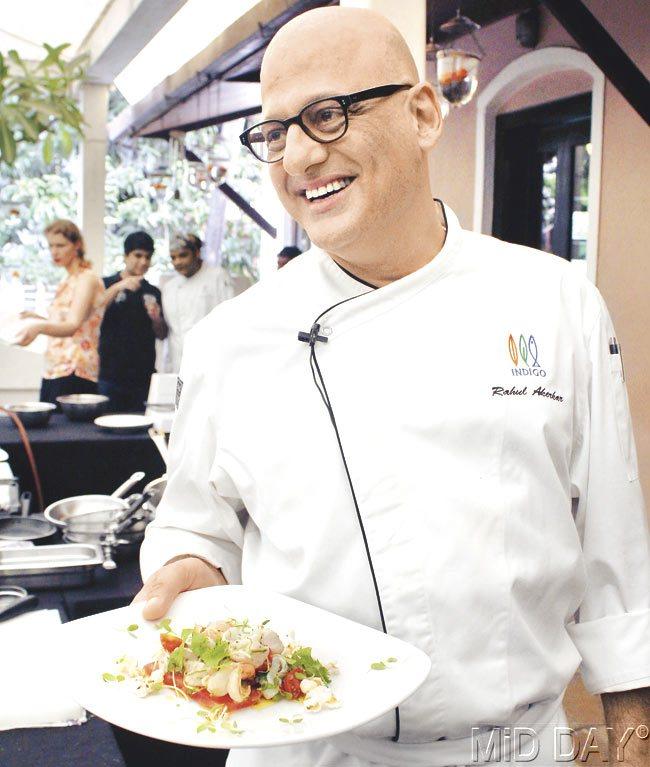
Rahul Akerkar ushered in the era of the chef-propreitor restaurant with Indigo. Pics/Bipin Kokate and Shadab Khan
All roads lead to Gokul
Gokul Restaurant and Bar, probably the most well-known dive in South Mumbai, is also a child of the late 1960s or early 70s. The tiny vegetarian restaurant serving South Indian didn’t do too well, recalls Dinesh Pujari whose father Jaya Pujari founded it, so they started selling non-vegetarian food and alcohol. Today, the restaurant can accommodate more than 600 people in one sitting. Legions of young executives who have gone on to become CEOs and directors have sat down at these formica-topped tables and poured themselves a quarter or a glass of beer while nibbling on a thick, large slice of Surmai Fry.
Around the corner from Bagdadi, and a little away from the action is the quiet Alps Restaurant and Beer Bar. Ramesh Sethi, the owner, who bought the residential property from a family of Jews in 1974, converted it into a restaurant in 1976. He named it after Alps restaurant in New Delhi, which was his favourite hangout, and where he met his wife. The menu is as simple and small as the restaurant; a couple of sizzlers, sandwiches, continental starters and main course. Nothing fancy, just a sweet place away from the maddening crowd.
Euro invasion
About two decades later, a restaurant opened on Mandlik Road that was set to change the face of public dining in Mumbai. Indigo ushered in the era of the chef-proprietor restaurant; the fine dining, standalone restaurant, of contemporary European cuisine, and the prominence of the bar.
But Indigo was not the first restaurant to open in that space. It was preceded by Vintage, which served excellent Hyderabadi food and was run by Essa Sham, the owner of the property who also briefly ran Bayside Café that later became the first Indigo Deli. Soon after Indigo, Busaba opened in the adjoining space; a few years later Bollywood Dhaba opened and shut at the end of the lane without anyone noticing its presence, or absence.
The good news for Social is that this is not a neighbourhood with a high turnover of restaurants. The only exceptions are the ill-fated Oba and 5 All-Day, both of which were in Apollo Hotel and where Sancho’s currently resides. Naval and Military Café, which was replaced by The Table at one end, and New York, a tiny Irani tea stall in whose place Moshe's opened at the other end, had both been around for decades as well.
Sometimes, the best place to grow is in the shade.
 Subscribe today by clicking the link and stay updated with the latest news!" Click here!
Subscribe today by clicking the link and stay updated with the latest news!" Click here!







